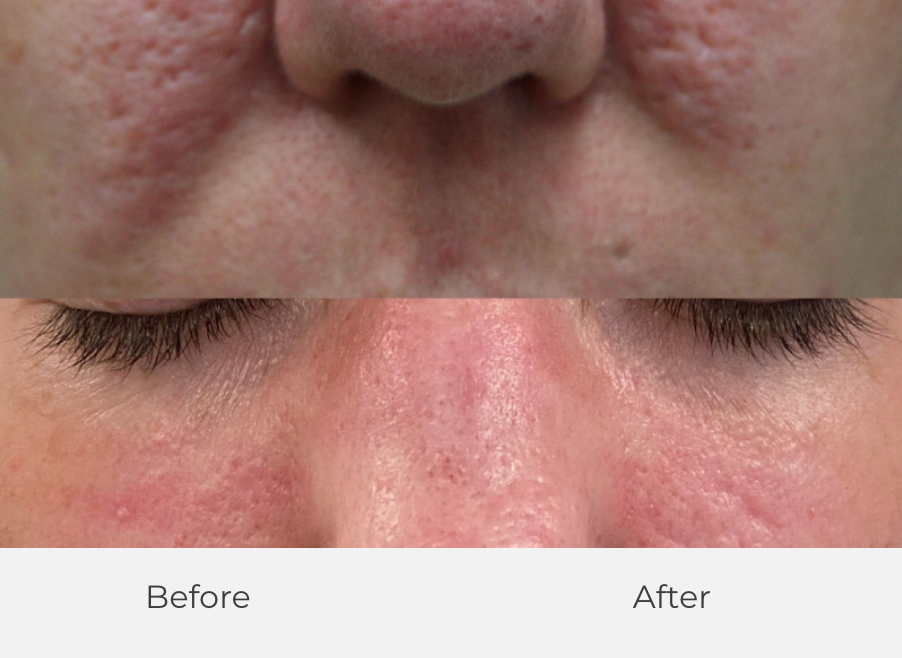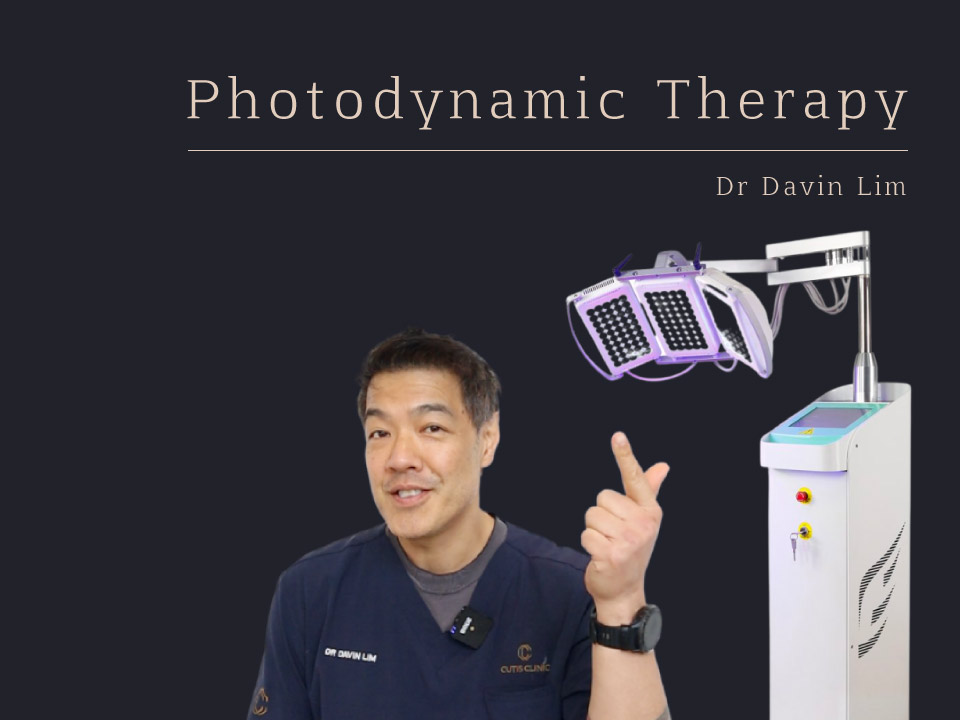Solar keratosis presents as rough, scaly lesions commonly seen on exposed areas of the face and hands. Sunspots are precancerous. Dermatologists at our Brisbane clinic’s employ lasers to markedly reduce healing times & provide superior results in both clearance and cosmesis.
Treatment options include:
- Photodynamic Therapy
- Fraxel Laser
- Efudix
- Hybrid Laser Resurfacing
Our results speak for themselves



Treatments for Sunspots
Why treat sun spots?
Are you a Queenslander? Chances are you have a sunspot or two.
Solar keratosis or actinic keratosis presents as rough, scaly lesions commonly seen on exposed areas of the face & hands. Sunspots are precancerous. They can be treated with liquid nitrogen freezing, or with creams. Dermatologists employ lasers to markedly reduce healing times & provide superior results in both clearance & cosmesis.
Queenslanders have the highest rate of skin cancer & photodamage in the world. At least 40% of adults over the age of 40 will have at least one solar keratosis. This amount compounds with age.
Why choose a dermatologist to supervise your treatment?
Fraxel High Density- why it’s considered the best treatment for solar keratosis
Dermatologists are the experts when it comes to providing the latest in scientifically proven skin directed treatments, including the management of sun damage & skin cancer. Our expertise covers traditional topical creams for sun damage but extends to cover chemical peels & the latest laser treatments, including fractional laser resurfacing & laser assisted photodynamic therapy.
Fractional high-density lasers are excellent in treating solar keratosis, with clearance rates exceeding traditional treatment including Efudix, Aldara & PDT. Fraxel HD is ideal for those with limited downtime & would benefit from sunspots treatment & photorejuvenation.
Learn More (Link to Fraxel laser in the skin cancer section)
The latest fractional lasers can efficiently remove sunspots with minimal downtime. Clearance rates of up to 90% can be achieved with one session. Downtime is only 5 days. Laser resurfacing is more comfortable compared to photodynamic therapy or topical treatments.
FAQs
The concept of field treatments
Sunspots are focal, but the underlying DNA damage arises in a field, namely areas that are not visible to the naked eye. Therefore dermatologists treat both solar keratosis & the surrounding areas. Field treatments include creams, PDT, chemical peels and lasers.
Why choose a dermatologist to supervise your treatment?
Dermatologists are the experts when it comes to providing the latest in scientifically proven skin directed treatments, including the management of sun damage & skin cancer. Our expertise covers traditional topical creams for sun damage but extends to cover chemical peels & the latest laser treatments, including fractional laser resurfacing & laser assisted photodynamic therapy. Visit our Brisbane clinics and see what our experts can do for you.
Why Cutis Dermatology Brisbane?
Cutis Dermatology is home to Brisbane’s leading dermatologists who specialise in skin cancer treatments. They have over 25 years of clinical expertise and work with the very latest scientifically proven laser treatments, we can offer high rates of clearance, with minimal downtime.
Why treat solar / actinic keratosis?
It’s all about the numbers. Solar keratosis can transform into invasive cancer in up to 5% of cases. This is an overestimation, as in reality it’s less than 1%.
Consider that the incidence of AK rises with age, increasing from less than 10% in the third decade of life to more than 80% in the seventh decade, & you can see why it’s important to reduce the number of solar keratosis.
How to tell the difference between a sunspot & a skin cancer?
It can be challenging, however in most cases a dermatologist can tell the difference. Sunspots are usually flat, scaly & are usually grouped. Frequently affected areas include the face (nose, temples, upper lip, ears), limbs -especially the hands.
There are many different variations of solar keratosis including pigmented, hypertrophic, atrophic, cutaneous horn, collision & more. These variants are beyond the scope of this article.
Is simply freezing sun spots off enough?
If you live in Victoria or Tassie, where there’s little UV, some cases of solar keratosis are isolated. This means 3-10 spots. They can easily & effectively be treated with focal treatments – or spot treatments such as liquid nitrogen.
If you reside in Brisbane, it’s a different story. It’s like playing hit the gopher. Hit a few, more will pop up. In this case we use field treatments including creams, & lasers. Remaining spots can be treated with liquid nitrogen.
What are the most popular treatments for actinic keratosis?
Liquid nitrogen & creams are the most common treatments. Creams include:
- Efudix
- Aldara
- Solaraze
- Picato – withdrawn from the market due to safety concerns.
Other treatments employed by dermatologists include PDT, laser resurfacing & chemical peels. For extreme cases we prescribe vitamin A analogues & superficial radiotherapy.
How do I know what is the best option for treating my sunspots & solar keratosis?
A dermatologist can guide you according to your clinical findings, history and downtime. Book a consultation at our Brisbane clinics. Reception will guide you through the referral process.
What is the recovery for the different treatments?
All forms of solar keratosis treatments will have associated downtime. This ranges from a few days to three months. As a guide-
- Efudix: 4 to 7 weeks recovery
- PDT: 1-2 weeks
- Aldara: 4-12 weeks.
- Lasers: 1 week
- AHA peels: No downtime
What is our preferred method of treatment?
Your dermatologist will discuss the pros and cons of each treatment, including clinical efficacy, remission rates, downtime & costs.
If downtime is an issue, thulium 1927 fractional laser resurfacing is a sensible option. Downtime is less than one week; clearance rates are over 80%.
Efudix is the most cost-effective treatment, but treatment downtime ranges from 4 to 7 weeks. PDT is another option with a high clearance rate & low downtime.
What is the advantage of fractional laser resurfacing?
Lasers give one of the highest clearance rates- typically over 80% in one session.
Downtime is also limited to less than one week. Resurfacing also improves cosmetic aspects of photoaging including pigmentation, wrinkles, laxity & pores.
Lasers are not covered by Medicare or private health insurance & cost between $1290 to $1390 per treatment. 95% of patients require only one session. Remission is typically 2-5 years.
What is PDT or photodynamic therapy?
This treatment uses a light sensitive gel prior to exposure to either a light source or daylight. The gel, known as amino-leveulenic acid is preferentially concentrated in abnormal pre-cancer & cancer cells.
Light in the blue & red spectrum, combines with oxygen & preferentially destroys the sunspots. Variations of PDT that we use include-
- Daylight PDT
- Laser assisted PDT
- Laser activated PDT
PDT, much like lasers & Efudix has a clearance rate of over 80%.
Will sunspots come back?
Yes. Once damage is done, it’s forever. The good news is that in most cases we can achieve a remission rate of 2-5 years. This means that with all treatments there is a slow regression back to pre-treatment.
Your dermatologist will see you at intervals ranging from 3 to 12 months to monitor & treat accordingly.
Solar keratosis remission times are shorter in-
- Immunocompromised patients
- Genodermatoses
- History of arsenic exposure
- Significant previous & current UV exposure
- Poor photoprotection
Can chemical peels work?
Peels are a great way of reducing the number of sunspots by 25 to 80%, depending on the peel type & protocol. As a guide-
- AHA glycolic peels can reduce 40-50%. 5 sessions per year. Low cost, low downtime.
- Retinoic acid peels can reduce 25-30%. Monthly sessions, low cost, low downtime.
- TCA Jessner Peels/ Deep phenol peels: reduce by 80+%, higher cost, high downtime.
Do sunspots go away if they are not treated?
Yes. Up to 25% of solar keratosis can regress or disappear over time. The regular use of sunscreens can cause this phenomenon.
Sunspots can also regress in winter when the UV radiation is less, or if you move to a country where sunshine is less intense.
How are actinic keratosis treated on the lips, namely actinic cheilitis?
Sunspots on the lips carry a higher change of malignant transformation. On this basis we are more stringent with our surveillance. As a guide-
- Low risk: Lip balm +/- topical vitamin A analogues
- Medium risk: PDT, followed by tretinoin as maintenance or laser resurfacing
- High risk: Ablative laser / mucosal advancement / surgical vermilionectomy
What is the optimal treatment if I hold a DVA card?
PDT is covered fully under DVA if you hold a white card for skin or a gold card. DVA patients are also entitled to most laser treatments.
These procedures are fully covered with no out of pocket expenses.
Can diet help reduce photodamage & actinic keratosis?
This is controversial; however, the largest study so far was conducted in Queensland. Scientists have shown that a diet high in antioxidants can potentially reduce sun damage, & photoaging.
An antioxidant rich diet includes fish, leafy green vegetables, nuts & resveratrol containing food groups.
Can vitamins help?
Yes. Vitamin B supplementation with nicotinamide / niacinamide can reduce sunspots over a 3–6-month period. Dr Devita Surjana, dermatologist at Cutis was instrumental in this ground-breaking study.
Vitamin A analogues can also reduce actinic keratosis & keratinocyte tumours. Dermatologists prescribe a synthetic vitamin A molecule in high-risk patients.
Vitamin D oral supplementation is controversial, however topical vitamin D has been shown to be helpful. In some cases, your dermatologist may add this vitamin with Efudix therapy.
What is the difference between a dermatologist & a skin cancer doctor?
An average of 5 years more of formal specialist skin cancer training. This means we deal with all forms of skin cancer management- from complex genodermatoses & immunosuppression, through to optimal management of solar keratosis & sunspots for best cosmetic outcomes.
We think, & implement outside the norm, hence why we use specialized methods for sunspot and mole removal, such as fractional and fully ablative laser resurfacing, laser assisted PDT & chemical peels.
How do dermatologists think outside the box for solar keratosis management?
Dermatologists are at the forefront of both clinical & research work.
We combine many modalities for the treatment of solar keratosis including-
- Radiotherapy for high-risk field changes
- Laser assisted thulium & CO2 fractional PDT
- Deep peels +/- intraoperative lasers
- Acitretin for high-risk immunosuppressed patients


